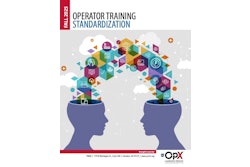The U.S. Food and Drug Administration (FDA) has announced a new Closer to Zero plan, which identifies actions the agency will take to reduce exposure to toxic elements in foods eaten by babies and young children to as low as possible.
The FDA’s action plan outlines a science-based, iterative approach for achieving continual improvements over time, and will be updated as new data, information, and resources become available. Reductions in the levels of toxic elements in foods will be made by:
- Advancing the FDA’s research on and evaluating changes in dietary exposures to toxic elements
- Setting action levels, with input from stakeholders
- Encouraging the adoption of best practices by industry to lower levels of toxic elements in agricultural commodities and products
- Increasing targeted compliance and enforcement activities
- Monitoring progress of levels over time
Action levels are a level of contamination at which a food may be regarded as adulterated within the meaning of section 402(a)(1) of the Federal Food, Drug, and Cosmetic Act. The FDA considers action levels, in addition to other factors and scientific evidence, when considering whether to bring enforcement action in a particular case.
The four stages of the new approach include:
Evaluating the scientific basis for action levels. The FDA will evaluate existing data from routine testing of the food supply, research, and data on chemical analytical methods, toxicological assays, exposure, and risk assessments, and other relevant scientific information. Through a process that may include engagement with stakeholders, advisory committees, public workshops, and consultation with scientific experts, federal agency partners, and other stakeholders, the agency will establish interim reference levels (IRLs) for certain toxic elements as appropriate. An IRL is a measure of exposure from food that the FDA may use to determine if the amount of exposure to an individual element across foods could result in a specific health impact.
Proposing action levels. The IRLs may be among the key factors that inform the development of the FDA’s proposed action levels for certain toxic elements in categories of baby foods and other foods commonly eaten by babies and young children.
Consulting with stakeholders on proposed action levels. For each toxic element in every identified category of food, the FDA will gather data and other information through a process of consultation to assess, among other things, the achievability and feasibility of the proposed action levels and the timeframes for reaching them.
Finalizing action levels. The FDA will use the information gathered from stakeholders, updated scientific research, and routine monitoring of data to make any needed adjustments and finalize action levels.
Once the FDA has published final action levels, it will establish a timeframe for assessing industry’s progress toward meeting the action levels and recommence the cycle to determine if the scientific data support efforts to further adjust the action levels.
The FDA also will support continual improvement with ongoing activities related to monitoring levels in foods; research on chemical methods, toxicological impacts, exposures, and risk communication; and routine compliance and enforcement efforts. The agency will evaluate information as it becomes available to determine whether any foods are adulterated or otherwise violative and take action as appropriate. The FDA intends to make information about its monitoring, research, and enforcement actions publicly available.
As action levels are finalized, the agency will addressing each toxic element in its turn to evaluate whether downward adjustments of interim reference levels should be made; proposing new action levels, as appropriate; consulting with stakeholders on feasibility, achievability, and other issues; and adjusting (as needed) and finalizing action levels.
PACK EXPO Las Vegas and Healthcare Packaging EXPO (Sept. 27-29, Las Vegas Convention Center) will reunite the packaging and processing community, offering new products, technologies, and solutions, while implementing up-to-date protocols for a safe and successful in-person event. Attendee registration opens in May.





















